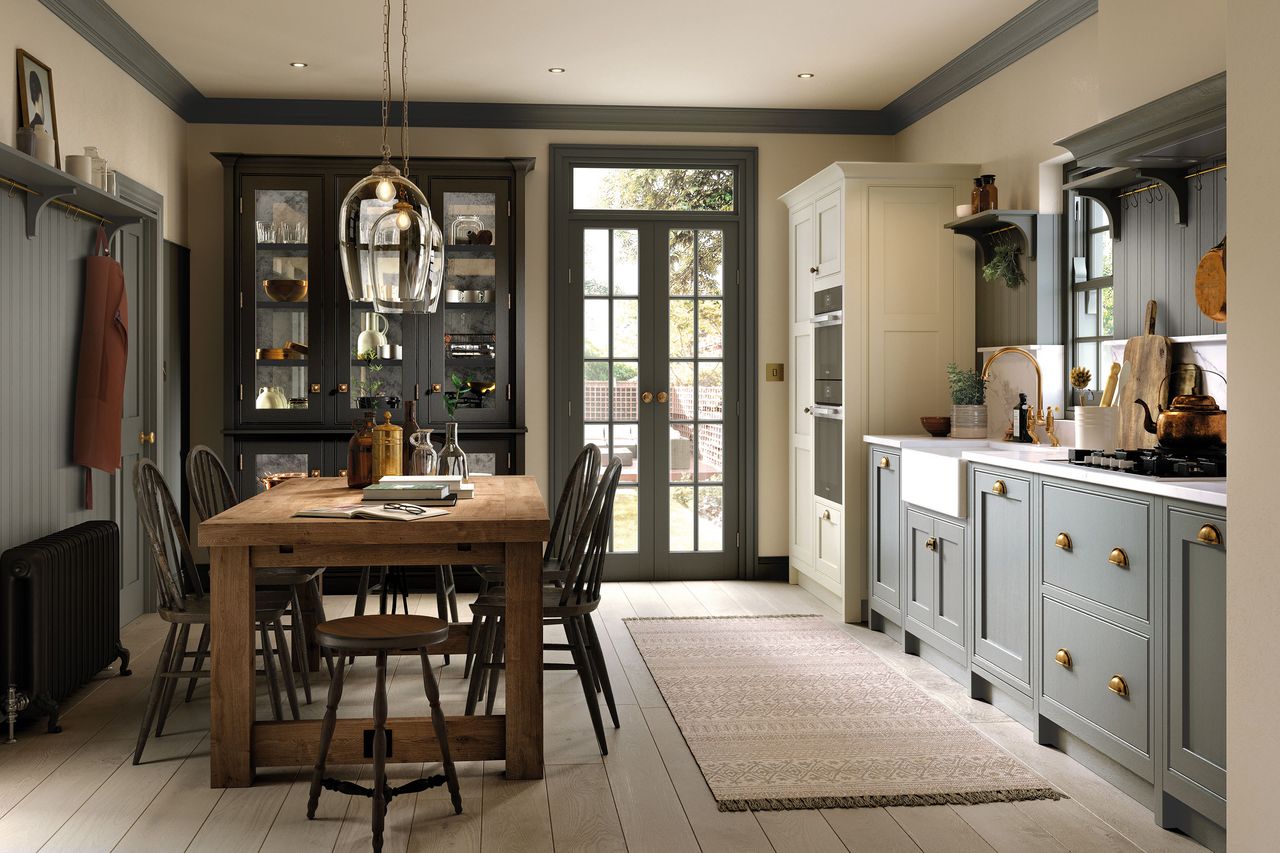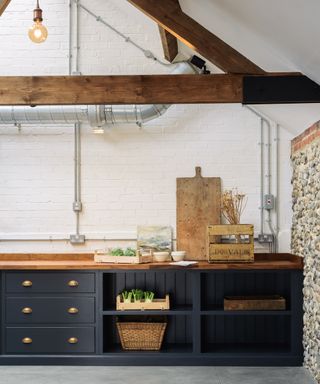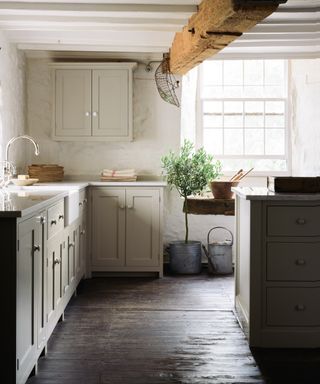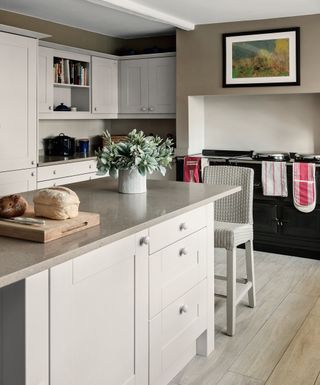Toe kicks versus plinths – why your choice can make or break a kitchen
This overlooked design detail is key to making floor cabinets look their best and giving you the upscale kitchen style you dream of


To toe-kick or not to toe-kick – that’s the question to ask when you’re planning a new kitchen. In kitchen design, a toe-kick is a recessed plinth at the base of your cabinets that gives them a ‘floating’ look. The alternative is a plinth skirting that creates a solid base at floor level.
Toe kicks versus plinths is a recurring debate, and one that's come to the fore on Instagram recently.
See: Country kitchen ideas – get the rustic look with our ultimate inspiration gallery

This Real Shaker Kitchen features a skirting along the base cabinets
‘Toe-kicks tend to be more common in the US, where kitchens often have a freestanding look,' says Collette Black from deVOL. 'In the UK, many of our customers choose skirting for a more fitted appearance that suits an English-style kitchen, but it’s really down to personal preference.'
That personal choice could be down to the size of your feet… ‘The toe-kick stops anybody who is quite tall or has big feet from having to stand away from the counter and potentially strain their back while washing at the sink,' says interior designer Dee Gibson, founder of Velvet Orange. 'This seemingly unimportant detail can have a big impact on the usability of your kitchen, and it’s something I always discuss with clients.'
‘While countertops need to be at the right height for you to keep your posture, the toe-kick will also help you stand closer to your work surface without angling yourself forward because your feet can’t get close enough.’
- More inspiration: Cottage kitchen ideas – design inspiration for homely spaces

The recessed plinth, or toe-kick, allows you to get up close o the counter
But whatever your shoe size, a toe-kick may not be the best option for you.
Sign up to the Homes & Gardens newsletter
Design expertise in your inbox – from inspiring decorating ideas and beautiful celebrity homes to practical gardening advice and shopping round-ups.
A modern kitchen works well with a toe-kick, but a traditional country-style or Skaker kitchen tends to look better with a proper skirting board around the base.
The trend for open-plan living also means that we are designing kitchens that need to work within a single living-cooking-entertaining-relaxing space. Which means we want cabinets that look more like furniture pieces.
‘A skirted kitchen creates continuity with wall details and styling,’ explains Gibson. ‘If your kitchen is bespoke or the supplier has a range of different options, you can choose how deep your skirting. And if you like chunky furniture, this will give your kitchen a very solid and expensive look.’

A toe-kick can be incorporated into a kitchen island
Gibson’s pro tip is to make sure that any skirting is finished in durable paint to withstand scuffs and chips from working in and cleaning your kitchen.
The final verdict on toe-kicks versus skirting: factor in how deep the skirting is in the rest of the room, how much time you spend in the kitchen and, finally, how big your feet are…
Andrea has been immersed in the world of homes, interiors and lifestyle since her first job in journalism, on Ideal Home. She went from women's magazine Options to Frank. From there it was on to the launch of Red magazine, where she stayed for 10 years and became Assistant Editor. She then shifted into freelancing, and spent 14 years writing for everyone from The Telegraph to The Sunday Times, Livingetc, Stylist and Woman & Home. She was then offered the job as Editor on Country Homes & Interiors, and now combines that role with writing for sister title homesandgardens.com.
-
 Anne Hathaway's Hamptons-inspired NY patio has rebooted an anti-color trend I thought I was over – these 3 easy-to-find buys will bag you the look, too
Anne Hathaway's Hamptons-inspired NY patio has rebooted an anti-color trend I thought I was over – these 3 easy-to-find buys will bag you the look, tooThe black furniture on the actress's New York terrace doesn't look dark – instead, it invites visual interest and intrigue to the pied-a-terre
By Sophie Edwards Published
-
 How to make a modern kitchen feel older – 6 simple tips for giving your contemporary space an aged feel
How to make a modern kitchen feel older – 6 simple tips for giving your contemporary space an aged feelSimple ways to give your kitchen a more characterful finish
By Molly Malsom Published
